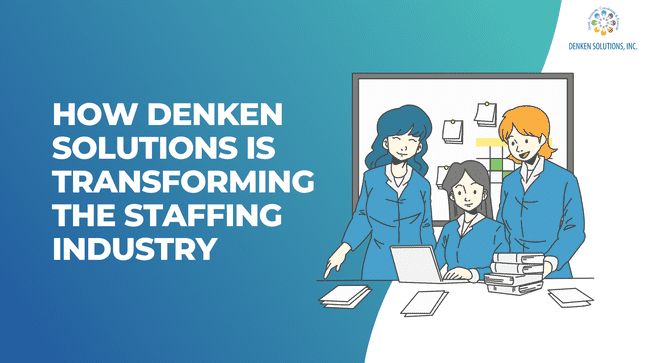Introduction
Resourcing challenges are a persistent issue in the engineering industry due to economic uncertainties and a limited availability of specialized talent. The shift towards digital transformation has increased the demand for engineers, yet many organizations struggle to find the right candidates to meet their business needs. Competition for top engineering talent is fierce, making it essential for companies to adopt flexible hiring solutions. One such approach is leveraging contingent workers to address staffing challenges effectively.
This article explores the key engineering staffing challenges employers face today and how contingent workers can provide a strategic advantage.
Key Engineering Staffing Challenges
Fluctuations in Demand Cycles
Global engineering firms often face unpredictable demand cycles due to shifting consumer preferences, regulatory changes, and economic factors. Project-based fluctuations can strain existing teams, leading to burnout and operational inefficiencies.
Example: According to a McKinsey report, 47% of engineering firms struggle to scale their workforce efficiently in response to market shifts. Implementing a contingent workforce helps businesses remain agile without overcommitting to permanent hires.
Shortage of Skilled Engineers
Finding specialized engineering talent for short-term projects is a growing challenge. Employers require niche skills to execute projects on tight deadlines, yet highly qualified professionals are in short supply.
Example: A Deloitte study found that 83% of manufacturers face difficulty in filling technical roles, particularly in AI, automation, and sustainable engineering. Contingent staffing solutions provide access to a wider talent pool, including freelance experts and temporary hires.
Balancing Resource Allocation and Quality
Many engineering organizations struggle to allocate resources efficiently while maintaining high-quality output, especially for non-core functions.
Solution: Engaging temporary workers for routine engineering tasks allows core teams to focus on strategic initiatives, improving productivity and innovation.
Misalignment Between Roles and Candidates
Urgent hiring needs often lead to skill mismatches. While candidates may be highly qualified, they might not be the best fit for specific projects.
Lack of Workforce Diversity
Diversity in engineering remains a challenge, yet it is crucial for fostering innovation. The industry still faces gender imbalances and under representation of minority groups.
Solution: Leveraging contingent hiring can promote workforce diversity by tapping into a global talent pool, including female engineers and professionals from diverse backgrounds.
How contingent workers in engineering can help drive innovation
The contingent workforce introduces a dynamic element to engineering projects. Distant from full-time or fixed employees, contingent workers in engineering remain free from the conventional hierarchies and constraints that enable them to drive project success and innovation.
Related read: How can engineering staffing solutions enhance project efficiency?
The best three ways of deploying contingent workers in engineering and mitigating the engineering staffing challenges are:
- Initiating project-based contracts with temporary workers or freelancers
In the engineering domain, project-based contracts act as the major means of connecting organizations with top-notch talents, including specialized engineers and architects. The distinctive stages of complex engineering projects require unique skills and competencies. In this sense, organizations can embrace project-based contracts for engaging freelancers, independent contractors, or temporary workers for specific projects or project phases.
This will allow organizations to congregate the right employees for the right project phases, thereby elevating flexibility and agility. Besides that, the engagement of contingent workers in engineering projects can enable employers to manage costs and time efficiently, confirming optimal project results.
- Opting for a third-party contracted workforce
Besides initiating project-based contracts directly with independent contractors or temporary workers, engineering organizations can consider partnering with an external staffing agency and involve a third-party contracted workforce. Proficient engineering staffing firms like Denken Solutions build and maintain an extensive database of skilled and competent engineers, architects, and other professionals Thus, the task of searching for ideal candidates becomes easier. In fact, by passing on the responsibility of hiring and engaging candidates to staffing firms, organizations can concentrate on core business processes, saving a good amount of time, costs, and effort.
- Developing an augmented workforce
For global-scale engineering projects or globally operating firms, flexibility and agility become crucial for managing change and innovation and driving success. This makes it necessary for organizations to embrace the concept of workforce augmentation, that is, supplementing the existing teams with a contingent workforce. Global engineering projects are vulnerable to frequent fluctuations due to several factors, such as market alterations and shifts in regulatory requirements. As such, an augmented workforce will enable organizations to scale their teams up and down as required and respond to market demands swiftly in a cost-efficient manner.
Conclusion
With the constantly altering business market sphere, the engineering industry often witnesses resourcing challenges. The major engineering staffing challenges that they face are changes in demand cycles and consumer preferences, lack of balance between resource allocation and quality maintenance, sourcing of skilled engineers for time-bound projects, placement of the right candidates in the right positions, and creation of a diverse workforce. The three ways in which organizations can utilize contingent workers in engineering are project-based contracts, third-party contracted employees, and augmented workforce.
If you want to get rid of any of the staffing challenges discussed in this article and harness the full potential of contingent workers in engineering, partner with Denken Solutions.



